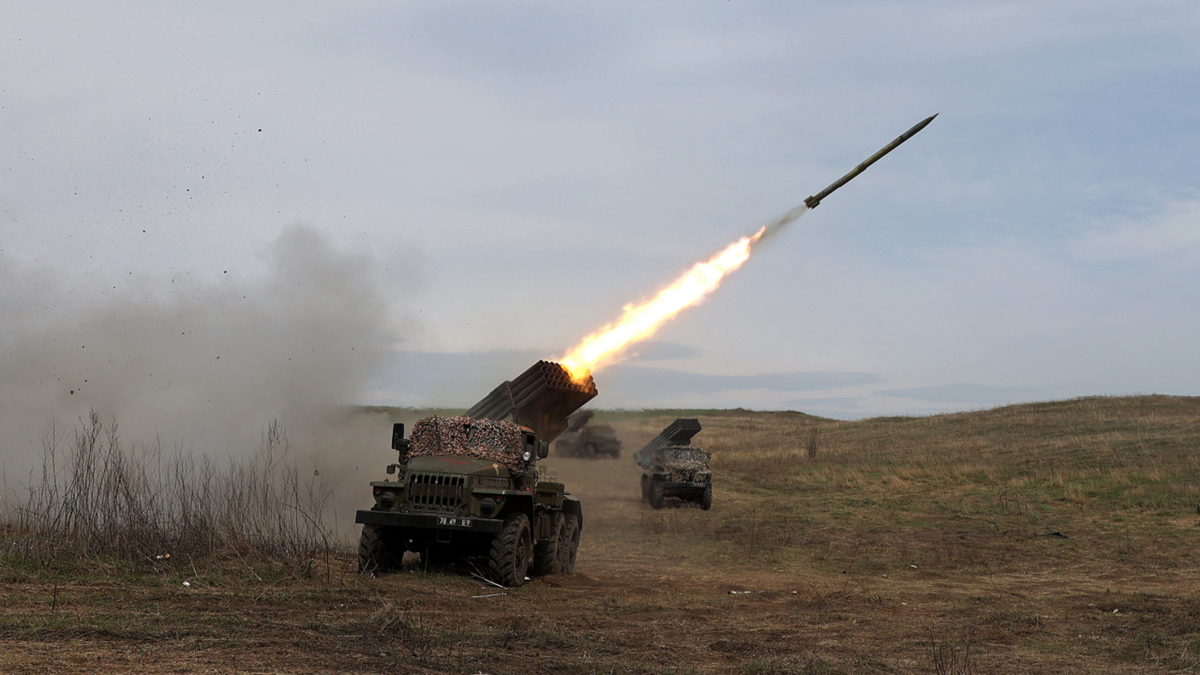Fox News Flash top headlines for April 20
Fox News Flash top headlines are here. Check out what's clicking on Foxnews.com.
The U.S. and its NATO allies have refused to send Ukraine warplanes over concerns it would escalate the conflict, but a senior U.S. defense official confirmed Wednesday that "spare parts" have been sent instead.
Allies have been able to bolster Ukraine’s air capabilities by sending it supplies and parts needed to expand its operational fixed-wing aircraft fleet.
REPUBLICAN SENATORS DEMAND SECRETARY OF STATE BLINKEN REOPEN AMERICAN EMBASSY IN UKRAINE

A Ukrainian Army soldier inspects fragments of a downed aircraft in Kyiv, Ukraine, Friday, Feb. 25, 2022. It was unclear what aircraft crashed and what brought it down amid the Russian invasion in Ukraine. Russia is pressing its invasion of Ukraine to the outskirts of the capital after unleashing airstrikes on cities and military bases and sending in troops and tanks from three sides. (AP Photo/Vadim Zamirovsky)
"They have more than 20 additional aircraft available to them than they did three weeks ago," the senior U.S. official said.
Pentagon press secretary John Kirby echoed these claims and told reporters that "through U.S. coordination and provision" Ukrainians have been sent "enough spare parts and additional equipment such that they have been able to put in operation more fixed-wing aircraft in their fleet."
It is unclear how many operational fixed-wing aircraft Ukraine has in total.
Ukrainian President Volodymyr Zelenskyy has pleaded with NATO allies to enforce a no-fly zone or send warplanes to help staunch the barrage of Russian missiles.
Defense officials estimate that Russia has levied upwards of 1,670 missiles at Ukrainian targets since the invasion commenced nearly eight weeks ago.
Top Pentagon officials previously argued the majority of Russia’s missiles were launched from surface-to-air platforms – but Russian forces appear to be changing tact as they focus their efforts in eastern Ukraine after failing to take Kyiv.

A Ukrainian multiple rocket launcher BM-21 "Grad" shells a Russian troop position near Luhansk in the Donbas region on Sunday. (Photo by ANATOLII STEPANOV/AFP via Getty Images)
"It appears as if one of the things they've tried to learn to do better is air-to-ground integration," the senior U.S. defense official said. "We're seeing some preliminary signs of that here in the early phases of this Donbas fight."
Security officials have warned that Russia’s second campaign in eastern Ukraine has not actually started despite some offensive movements by Moscow’s forces in the region.
Instead, officials believe Russia is still carrying out "shaping operations" to bolster its campaign in the region after experiencing a series of failures during its initial invasion.
The senior defense official said Russia is not only moving in artillery units to deal with a different terrain in the east, but command and control units and rotary-wing aviation support to assist with logistics – both of which have proven to be "weakness" points in Russia’s force posture so far.
Russia has also refitted its troops with new supplies.
Defense officials believe roughly 82 battalion tactical groups have re-entered Ukraine, the majority of which are in the nation's easternmost regions.
CLICK HERE TO GET THE FOX NEWS APP

Smoke rises above Azovstal steelworks, in Mariupol, Ukraine, in this still image obtained from a recent drone video posted on social media. (MARIUPOL CITY COUNCIL/via REUTERS THIS IMAGE HAS BEEN SUPPLIED BY A THIRD PARTY. MANDATORY CREDIT. NO RESALES. NO ARCHIVES.)
Bomber strikes appear to have become more frequent, particularly in cities like Mariupol, where Russian ground forces have been stalled for weeks in their attempts to completely besiege the city.
"In general, we continue to see a sense of weariness out of Russian pilots," the official said noting they often fire without crossing any borders and do not stay in Ukrainian airspace for long. "But they are using, again as a part of these shaping operations, they are using airstrikes from fixed-wing bombers in support of what they are trying to get done on the ground."






